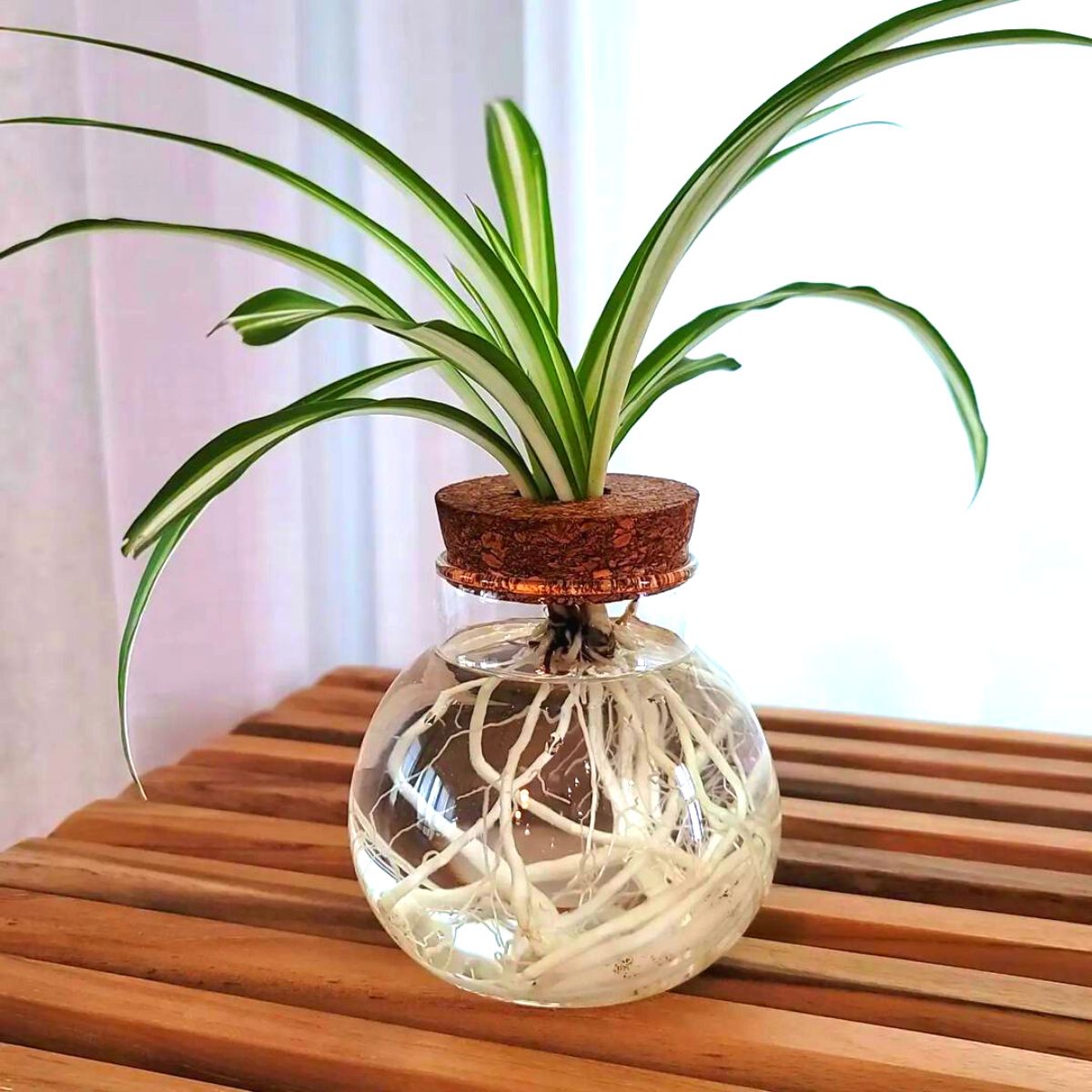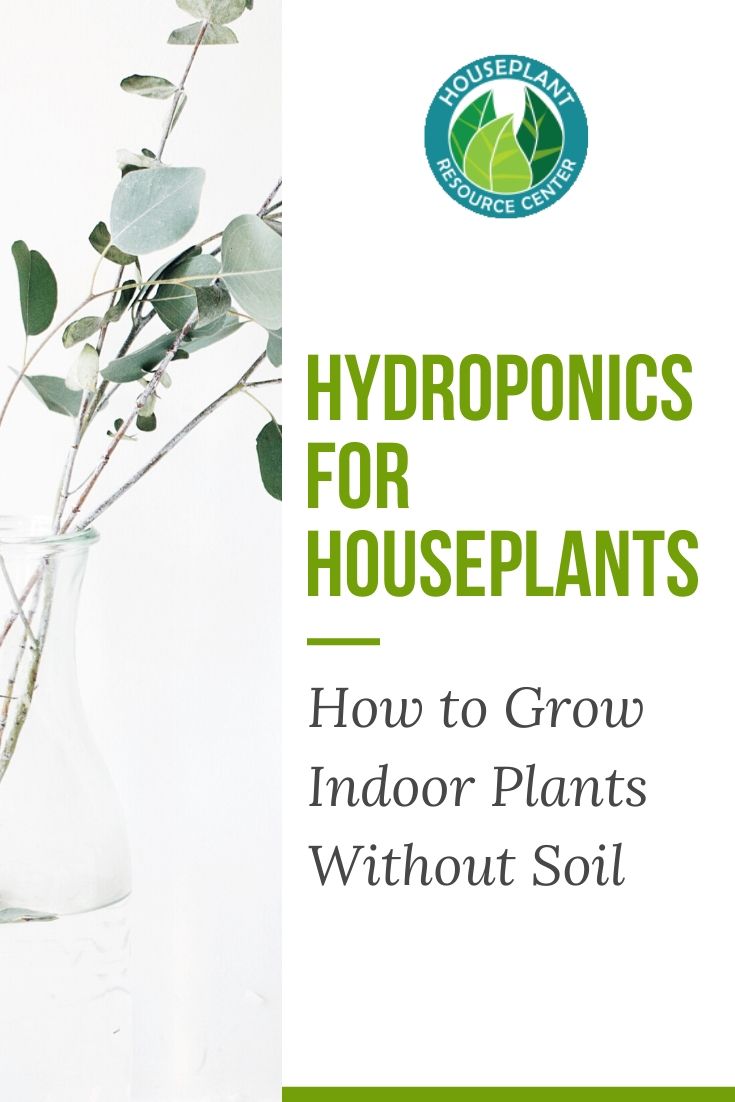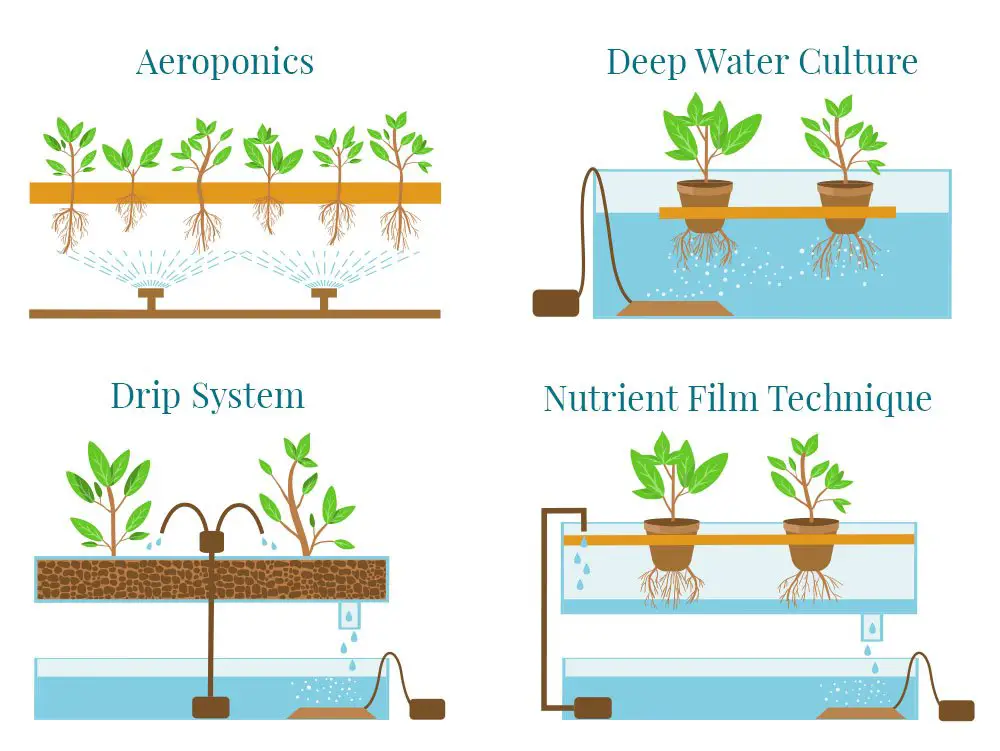Spider plants, pothos, and peace lilies can be grown hydroponically. Herbs like basil and mint also thrive in hydroponic systems.
Hydroponics is an innovative method of growing plants without soil. This technique uses nutrient-rich water to provide the necessary elements for plant growth. Many house plants adapt well to hydroponic systems, offering a cleaner and efficient way to cultivate greenery indoors.
Spider plants and pothos are popular choices due to their adaptability and low maintenance needs. Peace lilies add a touch of elegance with their beautiful white blooms. Herbs like basil and mint not only enhance the aesthetic but also provide fresh ingredients for cooking. Embracing hydroponics can transform your indoor gardening experience, making it more sustainable and enjoyable.
Introduction To Hydroponic House Plants
Hydroponic house plants are grown without soil. They thrive in nutrient-rich water solutions. This method is clean and efficient. It offers many benefits over traditional soil gardening.
Many house plants can grow hydroponically. These include herbs, flowers, and leafy greens. Hydroponic gardening is perfect for small spaces. It also reduces pests and diseases.
Benefits Of Hydroponic Gardening
- Faster Growth: Plants grow quicker in nutrient-rich water.
- Space-Efficient: Perfect for apartments and small homes.
- Less Maintenance: No soil means fewer pests and diseases.
- Water Conservation: Uses less water than soil gardening.
Basic Requirements
To start hydroponic gardening, you’ll need a few basic items. These include:
- Container: A pot or tank to hold the water.
- Water: Clean, filtered water for the plants.
- Light: Natural sunlight or grow lights.
- Air Pump: To oxygenate the water.
- Nutrient Solution: Essential minerals for plant growth.
A good container should be opaque. This prevents algae growth. Use a water pump to keep the water moving. Add nutrients to the water regularly. This ensures plants get what they need. Provide ample light. Most plants need 12-16 hours of light per day.
| Item | Purpose |
|---|---|
| Container | Holds the water |
| Water | Feeds the plants |
| Light | Supports photosynthesis |
| Air Pump | Oxygenates the water |
| Nutrient Solution | Provides essential minerals |
Hydroponic gardening is simple. With the right tools, anyone can do it. Start your hydroponic garden today. Enjoy fresh, healthy plants all year round.
“`:max_bytes(150000):strip_icc()/SPR-houseplants-grown-in-water-4177520-hero-264670857d8b4c68a66b6d63c20e179e.jpg)
Credit: www.thespruce.com
Popular Hydroponic House Plants
Hydroponic gardening is a fun way to grow plants indoors. Many house plants thrive in water without soil. Below, we explore some popular choices. These plants are easy to care for and grow quickly.
Herbs
Herbs are excellent choices for hydroponic gardening. They are easy to grow and require little space. Here are some popular herbs you can grow:
- Basil – Grows quickly and has a strong aroma.
- Mint – Refreshing and great for teas.
- Thyme – Ideal for cooking and has a lovely scent.
- Cilantro – Perfect for salads and salsas.
- Parsley – Adds a fresh taste to any dish.
| Herb | Benefits |
|---|---|
| Basil | Fast growth, aromatic leaves |
| Mint | Refreshing, great for teas |
| Thyme | Cooking, lovely scent |
| Cilantro | Salads, salsas |
| Parsley | Fresh taste, versatile |
Leafy Greens
Leafy greens are another great choice for hydroponic systems. They grow fast and are nutritious. Here are some common leafy greens you can cultivate:
- Lettuce – Grows quickly and is perfect for salads.
- Spinach – Packed with vitamins and easy to grow.
- Kale – A superfood that grows well in water.
- Swiss Chard – Colorful and nutritious leaves.
- Arugula – Adds a peppery flavor to dishes.
| Leafy Green | Benefits |
|---|---|
| Lettuce | Quick growth, perfect for salads |
| Spinach | Vitamins, easy to grow |
| Kale | Superfood, grows well in water |
| Swiss Chard | Colorful, nutritious |
| Arugula | Peppery flavor, adds zest |
Best Flowering Plants
Hydroponics offers a unique way to grow plants without soil. Many flowering plants thrive in this environment. They bring color and beauty to your home. Here are some of the best flowering plants for hydroponic growth.
Orchids
Orchids are stunning and delicate flowers. They do well in hydroponic systems. Their roots absorb nutrients directly from the water. This method keeps them healthy and vibrant.
| Common Types | Light Requirements | Water Needs |
|---|---|---|
| Phalaenopsis | Indirect Light | Keep Moist |
| Cattleya | Bright Light | Allow to Dry Between Watering |
Orchids need specific care. Use a balanced nutrient solution. Maintain proper humidity levels. These steps ensure your orchids flourish.
Peace Lilies
Peace Lilies are elegant and easy to grow. They adapt well to hydroponic systems. Their white blooms contrast beautifully with dark green leaves.
- Low light conditions
- Regular watering
- Balanced nutrients
Peace Lilies also purify the air. They remove toxins and improve indoor air quality. This makes them a great addition to any home.
Place Peace Lilies in a bright, indirect light spot. Use a hydroponic nutrient solution. This keeps them healthy and thriving.
Air-purifying Hydroponic Plants
House plants not only beautify our homes but also purify the air. Hydroponic growing allows you to grow these plants without soil. This method is clean and efficient. Below are some air-purifying plants that thrive hydroponically.
Spider Plants
Spider plants are excellent for beginners. They grow quickly and are low-maintenance. These plants can remove toxins like formaldehyde and xylene from the air.
- Light: Bright, indirect light
- Temperature: 70°F to 90°F (21°C to 32°C)
- Humidity: Average to high
Spider plants can grow in water jars or hydroponic systems. Ensure you change the water regularly. This keeps the roots healthy and free from algae.
Philodendrons
Philodendrons are popular for their ability to purify the air. They remove toxins like formaldehyde and benzene. These plants are also easy to grow hydroponically.
| Type | Light | Temperature |
|---|---|---|
| Heartleaf Philodendron | Low to bright, indirect light | 60°F to 80°F (16°C to 27°C) |
| Split-Leaf Philodendron | Bright, indirect light | 65°F to 85°F (18°C to 29°C) |
Philodendrons thrive in jars of water or hydroponic setups. Change the water every two weeks. Add liquid nutrients for better growth.
Low-maintenance Options
Many people love house plants but prefer low-maintenance options. Growing plants hydroponically is a great choice. It requires less effort and brings nature indoors. Here are two easy plants to grow hydroponically.
Pothos
Pothos is a popular house plant. It is perfect for beginners. This plant thrives in water. Pothos has beautiful green leaves. It can grow in low light. It requires little care. Follow these simple steps to grow Pothos hydroponically:
- Cut a stem below a leaf node.
- Place the stem in a glass of water.
- Change the water every two weeks.
- Keep the glass in indirect sunlight.
Lucky Bamboo
Lucky Bamboo is another easy-to-grow plant. It looks elegant and brings good luck. This plant can grow well in water. It needs minimal attention. Follow these steps to grow Lucky Bamboo hydroponically:
- Choose a tall, clear container.
- Fill it with pebbles for support.
- Place the bamboo stalks in the container.
- Add water to cover the roots.
- Keep the water level consistent.
- Place the container in indirect sunlight.
| Plant | Light Requirement | Water Change Frequency |
|---|---|---|
| Pothos | Low to indirect light | Every 2 weeks |
| Lucky Bamboo | Indirect sunlight | Maintain water level |
Growing house plants hydroponically is simple. Pothos and Lucky Bamboo are great choices. These plants need little care and add beauty to your home.
Hydroponic Systems For Home Use
Hydroponic systems for home use offer an easy way to grow house plants. These systems use water, not soil, to deliver nutrients to plants. They are perfect for people who want to grow plants indoors. Different types of hydroponic systems can suit various needs.
Wick System
The Wick System is simple and easy to set up. It uses a wick to draw nutrient solution from a reservoir to the plant roots. This system is passive, meaning it doesn’t need pumps. It’s great for growing small plants like herbs and leafy greens.
| Pros | Cons |
|---|---|
| Low cost | Not suitable for large plants |
| No electricity needed | Limited nutrient delivery |
| Easy to maintain | Slower growth |
Deep Water Culture
Deep Water Culture (DWC) is another popular system for home use. In DWC, plant roots are submerged in a nutrient-rich water solution. An air pump provides oxygen to the roots, promoting faster growth.
- Fast plant growth
- Suitable for larger plants
- Easy to set up
Deep Water Culture systems are great for growing a wide range of plants. These include tomatoes, peppers, and even some fruit plants. Regular maintenance is needed to keep the water clean and nutrient-rich.
Tips For Successful Hydroponic Gardening
Hydroponic gardening allows you to grow plants without soil. You can use water and nutrients instead. This method helps plants grow faster. It also saves space and water. Follow these tips for a thriving hydroponic garden.
Nutrient Solutions
Nutrient solutions provide plants with essential minerals. These solutions must be balanced. Use a mix that includes nitrogen, phosphorus, and potassium. You can buy pre-made solutions or mix your own.
Check the pH level of your solution. It should be between 5.5 and 6.5. Use a pH meter to monitor this. Adjust the pH with pH up or pH down products.
Change the nutrient solution every two weeks. This prevents nutrient buildup. It also keeps the solution fresh for your plants.
Lighting Requirements
Plants need light to grow. Hydroponic gardens often use artificial lights. LED lights are a popular choice. They are energy-efficient and provide the right spectrum of light.
Place the lights close to the plants. This ensures they get enough light. Adjust the height as the plants grow. Keep the lights on for 14-16 hours a day. Use a timer to automate this process.
Some plants need more light than others. Leafy greens need less light. Fruiting plants need more light. Adjust the light intensity based on the plant type.

Credit: thursd.com
Common Challenges And Solutions
Growing house plants hydroponically can be rewarding. Yet, it comes with its unique set of challenges. This section will discuss some common problems and provide practical solutions.
Algae Growth
Algae can thrive in hydroponic systems due to light exposure. They compete with your plants for nutrients and oxygen. This can stunt plant growth and cause other issues.
| Challenge | Solution |
|---|---|
| Light exposure on nutrient solution | Cover reservoirs with opaque materials. |
| High nutrient levels | Monitor and adjust nutrient concentrations. |
Root Rot
Root rot is another common issue. It occurs when roots are too wet or lack oxygen. This leads to brown, mushy roots and stunted growth.
- Ensure proper aeration: Use air pumps to oxygenate the water.
- Check water temperature: Keep it between 65-75°F (18-24°C).
- Remove affected roots: Trim off any brown, mushy roots.
- Use beneficial bacteria: Introduce bacteria that prevent root rot.

Credit: houseplantresourcecenter.com
Frequently Asked Questions
Can All Indoor Plants Be Grown Hydroponically?
Not all indoor plants thrive hydroponically. While many adapt well, some require soil for optimal growth and health.
What Houseplants Are Hydroponic?
Hydroponic houseplants include pothos, spider plants, philodendrons, and peace lilies. Herbs like basil, mint, and oregano also thrive hydroponically.
What Are Three Plants That Are Not Recommended For Hydroponics?
Carrots, potatoes, and corn are not recommended for hydroponics. These plants require extensive root space and soil nutrients.
What Plants Can Be Grown In A Hydroponic System?
Lettuce, spinach, basil, strawberries, cucumbers, tomatoes, and peppers thrive in hydroponic systems. These plants grow quickly and efficiently.
Conclusion
Hydroponic gardening offers a fantastic way to grow various house plants. It’s efficient and space-saving. Popular choices include herbs, leafy greens, and even some flowering plants. By adopting hydroponics, you can enjoy year-round greenery. Start your hydroponic journey today and experience the joy of thriving house plants.

My mission is to help you bring the beauty of nature indoors with expert advice, detailed plant care guides, and creative design ideas.





Leave a Reply